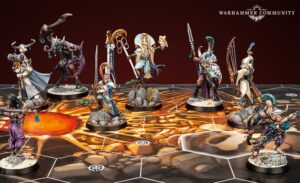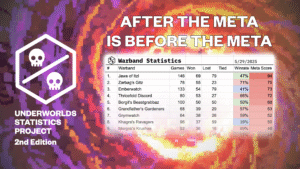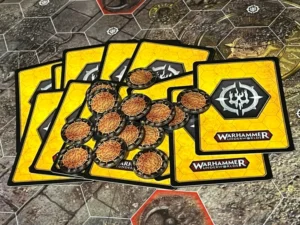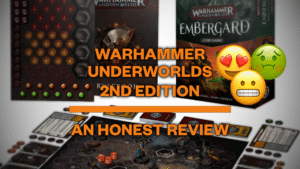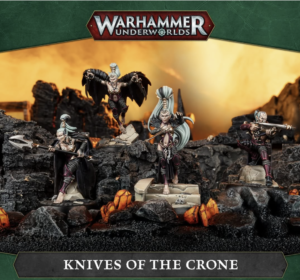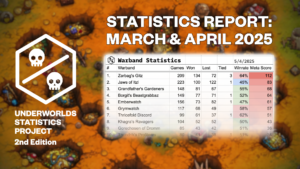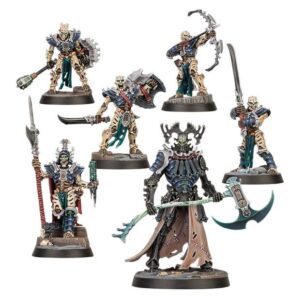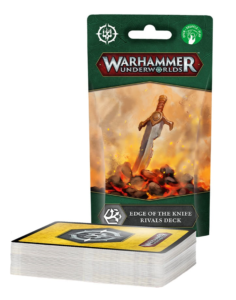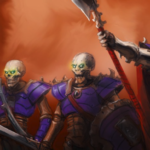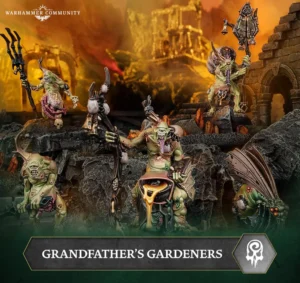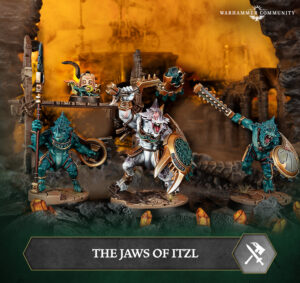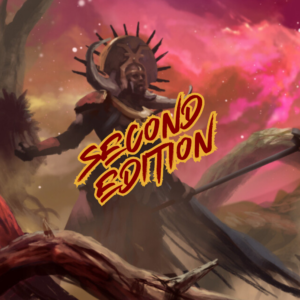Intro
Hello and welcome back for another serving of Bacon’s Bits, the article series where I get to dig into a niche Underworlds topic and weigh in with my opinion. With the swap to 2nd edition, I waited to restart this series because, even though it is fully opinion-based, I still want to give what I consider to be “good” competitive advice, which obviously requires some amount of understanding for how the game actually plays. While I think the commentary that 2nd edition is totally different from 1st is mostly an exaggeration (I think plenty of those skills translate), enough has changed that getting some additional reps was important for this kind of article. Now that I feel I’ve reached that point, we’re back with our first 2nd edition Bacon’s Bits topic: Nemesis deckbuilding. Since we already did a podcast episode on this very topic (which may or may not have released yet, so maybe spoilers?), I’m going to take a slightly different angle and discuss building with what I consider to be the 3 “foundation” decks in the game, which are Blazing Assault (BA), Pillage and Plunder (PnP), and Countdown to Cataclysm (CtC). If you are building a Nemesis deck that does not use at least one of these decks in the pairing, I think you are putting yourself at a disadvantage in the current meta. While this is not a review article, I will go over the best aspects of each of these decks as well as the relevant pairings that you can spin off them as the foundation for your Nemesis deck.
Blazing Assault
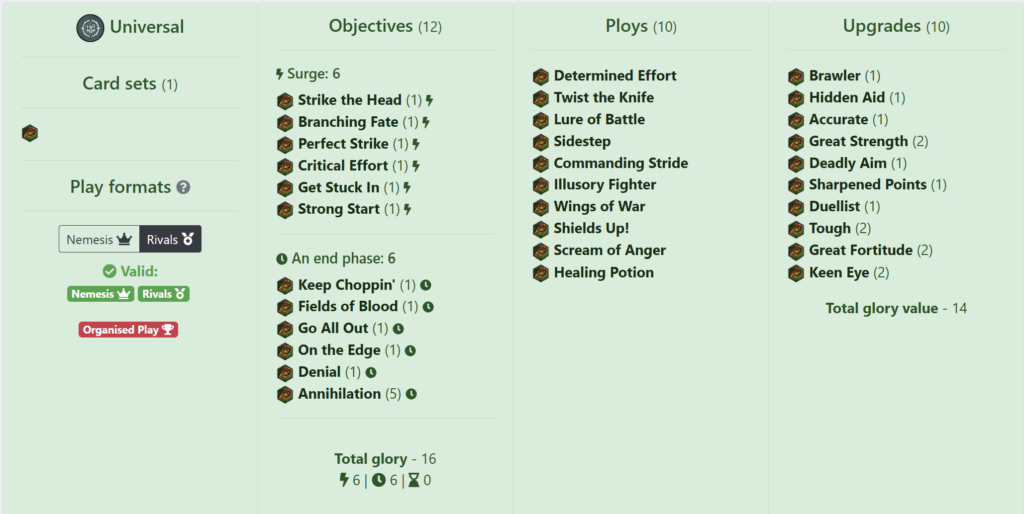
Unsurprisingly given its designation as a Strike deck, BA is probably the most straightforward of the bunch. It asks a simple question: “Does your warband need to hit lots of attacks to win games?” If the answer is yes, you take it. Particularly with the nerf to Reckless Fury via the most recent FAR, there is no set of power cards in the game that can match the raw efficiency of BA. While it’s got great staples which pop up in other decks such as Commanding Stride, Healing Potion, Sidestep, Duellist, Keen Eye, Great Fortitude, and Great Strength, its unique offerings on top of those are somehow even better (or at least the ability to take both these staples and the deck’s unique cards makes it better). It has (arguably) the best accuracy ploy in the game with Determined Effort, the best teleport ploy in Illusory Fighter, and even the best guard ploy in Shields Up! On top of that, it’s the only deck to pack surprise grievous via Twist the Knife and has one of very few enemy-eligible push cards in the form of Lure of Battle. Even Wings of War and Scream of Anger had their value boosted in the most recent game updates (the former via FAQ and the latter via the forsaking of the Reckless Fury cards). If you’re keeping track, I’ve literally named all 10 ploys in the deck here. While you will likely not take all of them in a given deck, I think it is nearly impossible to take less than 7 for any deck you build with BA paired in. It’s got the best ploys of any deck and it is, frankly, not close. If that weren’t enough, Hidden Aid + Accurate are two of the best 1-glory upgrades in the game and Get Stuck In + Critical Effort are two of the best, if not the best, “make an attack” surges in the game. The only real weakness in the deck comes with the end phase objectives (you generally will only be able to take 2-3 and those are only 1-glory scores), which means your secondary deck needs to fill that gap, but there are certainly pairings which can do that for you. While I think BA can work as a partner with literally every one of the 6 other decks released to-date, 4 of those pairings (with ES, PnP, CtC, and RF) are what I would consider to be top-end meta options.
Pillage and Plunder
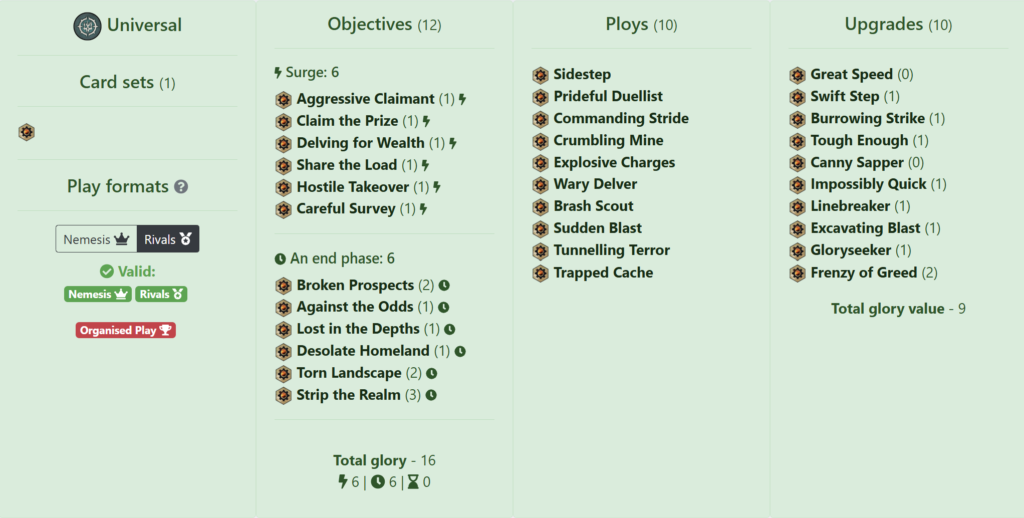
While BA makes its bones (quite literally) in the power deck and suffers in the objectives (specifically the end phases), the opposite is true for PnP. While the power deck is perfectly serviceable with unique and strong cards like Gloryseeker, Canny Sapper, Trapped Cache, and Explosive Charges on top of some reasonable tech pieces and staple cards, it lacks the consistent and explosive potential of what BA has on offer. That being said, there is not a single more cohesive set of objective cards in the game. 4 of the 6 end phase cards pay off moving onto and delving tokens, with 3 of 6 surges scoring for doing the same (plus a couple of very splashable options in Hostile Takeover and Aggressive Claimant). Furthermore, while a bit matchup-dependent, 3 glory for Strip the Realm is fantastic payout not only when you score it, but also when it forces your opponent to take suboptimal on-board turns to try and deny it. I don’t think I’ve built with fewer than 8 PnP objectives in a deck that uses it, but plenty of warbands are capable of rattling off 10-11 of them. It’s the only deck in the game that, to me, has enough easy and synergistic cards to merit a 13-objective deck (it would be extremely difficult to convince me to ever go above 13 with any deck), because it’s plenty feasible you will still score them all. In addition to the aforementioned BA pairing, it makes for arguably the most consistent scoring package in the game when paired with CtC, but also works quite well with WaR and EotK, with niche, yet still serviceable pairings on ES and RF.
Countdown to Cataclysm
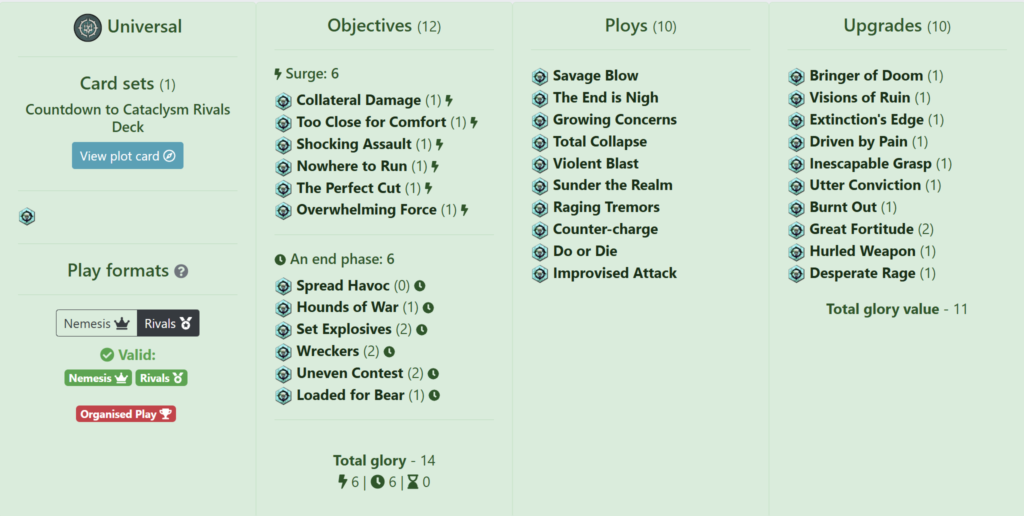
Lastly, we have CtC, which falls somewhere between our previous two entrants, as it shines more for its flexibility than anything else. If you’d like a more in-depth analysis of the deck itself, I encourage you to check out the article on the Staggerers blog which covers its meta share and takes a more methodical approach to expanding on the deck’s synergy, but I will keep it a bit more “general advice” here. While the end phase objectives are the highlight of what the deck has to offer, CtC has bits and pieces that can work for just about every playstyle, allowing it to neatly fill any holes that might be present in your second deck. If you’re aiming for more of the hold subtheme, you have the natural synergy with the countdown tracker itself (if you’re standing on tokens, your opponent isn’t standing on them at the same time) together with the great end phase payout of Spread Havoc and Set Explosives, as well as defensive pieces like Countercharge, Growing Concerns, Utter Conviction, Great Fortitude, and Driven by Pain. Violent Blast can also move folks off of those tokens you want to be standing on if you are mindful about your initial treasure token placement. While benefitting from some of the same cards, more aggressive playstyles will also appreciate that increased consistency in end phase scoring (especially with the addition of Wreckers), the extra accuracy from Raging Tremors, and the extra attack output in Improvised Attack, Desperate Rage, and Hurled Weapon. Furthermore, some warbands/strategies like to lean into ping damage, with Total Collapse and Sunder the Realm being two of the better options in the game thanks to their lack of restriction in use against vulnerable and/or damaged fighters. Whichever of the pieces you are dipping into the deck for, the flexibility it offers makes for a fantastic partner, as we’ve seen in top-meta BA x CtC, ES x CtC, and PnP x CtC decks. I think the loss of the forsaken cards in RF (particularly the survivability from Utter Ignorance) hurt its eligibility for pairing with CtC, but there’s still some synergy there. Meanwhile, WaR allows you to team up for some truly impressive ping output (at least to the extent you can accomplish this while navigating the play conditions of such cards in the 2nd edition), making CtC the only deck where I wouldn’t look at you funny if you pitched me on any given one of its (eligible) pairings.
Conclusion
As I mentioned at the outset, these are the three decks that, currently, will almost always have to represent at least one, if not both, of my Rivals decks in my Nemesis pairing. While an individual warband’s playstyle might not jive with a particular one or two of them, I think you are generally leaving a bit too much power on the cutting room floor if you elect to take none of the 3, whether that’s a disadvantage in power card efficiency from cutting BA or the decreased scoring efficiency from letting PnP and/or CtC go unused. As with most “rules,” I’m sure there are some exceptions here that will make me eat my words, but I just couldn’t help but notice the trends of the decks that I’ve got loaded up on underworldsdb and how often these 3 seemed to pop up. The inherent outcome of a competitive game is that the best stuff will always float towards the top, and Underworlds is no exception. Players will gravitate to the most consistently powerful strategies, so it is no surprise that we see these 3 decks popping up so much. Sure, they’ve essentially made up the lion’s share of possible pairings since the game’s inception given that we only had 6 Rivals decks, but I think it’s telling that, prior to the game updates, of a possible 15 Nemesis pairings between those 6 Rivals decks, the bottom 3 in the “Meta Score” metric for our ongoing statistics project were the permutations which do not include one of the three decks we’ve discussed in this article. Will the introduction of EotK change that? I don’t think so. That’s not to say that it can’t have some impact on what the meta looks like, but, judging by our first impressions, two of EotK’s most eligible Nemesis pairings appear to be BA and PnP anyway (CtC pairing being ineligible due to the plot card rule). Barring any kind of deck rotation (which is hopefully a long ways off), I have a hard time seeing these 3 decks getting knocked from their podium any time soon short of some pre-FAR Reckless Fury (which, hilariously, still frequently paired with one of these 3 decks when used) level power spikes in upcoming releases or some significant restrictions imposed via FAR for themselves.
That’s all for this time. Thanks again for reading and please let me know if there are any topics you’d like to see addressed in future installments of this series. Until then, we wish you the best of luck on YOUR Path to (consistent) Glory!

